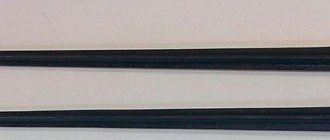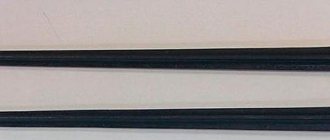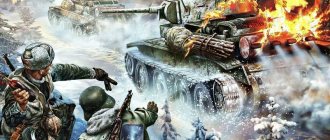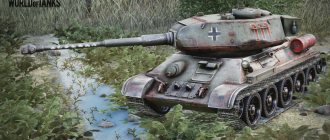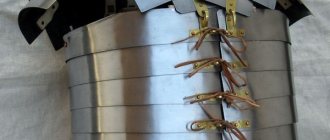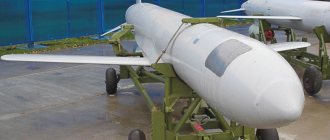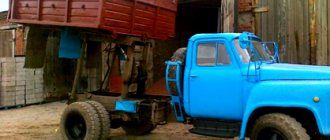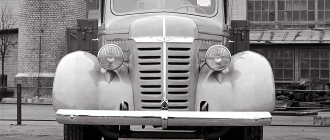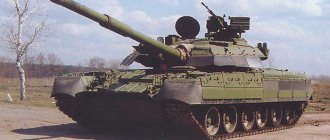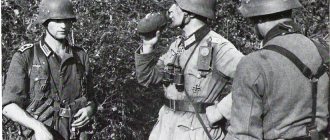After the First World War, fighters all over the world were created using a biplane or sesquiplane design. At the turn of the 30s, monoplane fighters began to appear. For a long time, experts could not decide which of the two schemes to give preference to.
In 1932, by decision of the Central Committee of the All-Union Communist Party of Bolsheviks and the Soviet government, design bureaus began designing maneuverable and high-speed fighters of both designs.
In February 1933, the design team led by N.N. Polikarpova began creating a single-seat, maneuverable biplane fighter, designated TsKB-3.
Already in October, test pilot V.P. Chkalov performed the first flight on a prototype. It was from this time that the joint work of two outstanding Soviet aviators began - designer N.N. Polikarpov and test pilot V.P. Chkalova. Flight tests were carried out at the Moscow Central Aerodrome and were successfully completed in late December. During the next 1934, serial production of fighters, called I-15, was mastered at Moscow aircraft factories No. 1 and No. 39.
The I-15 aircraft had good aerodynamics for its time and rationally chosen layout parameters. Good power supply, provided in a wide range of altitudes by a fairly powerful M-22 engine (power 480 hp) with a supercharger, excellent aerobatic qualities, low weight of the structure and fairly effective weapons ensured the high combat effectiveness of the I-15.
Typically, the I-15's armament consisted of two 7.62 mm PV-1 synchronized machine guns with 1,500 rounds of ammunition. In overload, it was possible to install either two more of the same machine guns, or four Der-32 holders for 10-kg bombs under the wing. In 1938, individual I-15 fighters were equipped with two 12.7 mm BS machine guns.
Due to the characteristic shape of the upper wing, the I-15 fighter was often called the “Seagull”. The center section of the upper wing, adjacent to the fuselage, created such a significant lateral surface that the plane could fly with a bank of up to 90° - almost on its side. In a battle on turns (turn time - 8 s!) it was possible to get behind any of the fighters that existed at that time. According to pilots, the plane was extremely easy to fly. In terms of flight speed, it exceeded the first model of the monoplane fighter I-16 (TsKB-12) with the M-22 engine.
However, starting from the very first prototype, the attitude towards the I-15 was ambiguous. The curved gull-type upper wing, used to reduce drag and improve visibility, did not receive unanimous approval from the military. It was believed that such a wing unacceptably impaired forward and side visibility, especially during takeoff. Experts argued that if the wing was made normal, visibility and directional stability would improve, which was assessed as insufficient - there was a slight yaw, about 1-2°, which interfered with aiming and shooting.
Polikarpov’s numerous attempts to prove the unfoundedness of such statements by purging the aircraft in a wind tunnel, as well as through direct demonstrations in flight, led nowhere.
In 1935, it was decided to stop serial production of the I-15 fighter. N.N. Polikarpov was offered to radically improve the aircraft and introduce a new (“normal”) center section into the design of the machine.
I-15bis (I-152), prepared for serial production in the fall of 1937, was exactly what the military wanted it to be. The structure of the entire aircraft has been strengthened. A more powerful 9-cylinder M-25V engine (750 hp) with a single-speed supercharger was installed.
The plane became 300 kg heavier, which is why its maneuverability and, despite the increase in power, its rate of climb deteriorated. Compared to the Chaika, the aerodynamic drag of the upper wing has increased. Nevertheless, in terms of maneuverability and rate of climb, the I-15bis was one of the best vehicles of its time.
Despite the fact that the I-15bis fighter turned out to be clearly outdated by the beginning of its production, it nevertheless became a participant in several wars. The aircraft was used during combat operations in Spain, China and Khalkhin Gol, and was also actively used in the first months of the Great Patriotic War as an attack aircraft (until 1942).
A total of 2,408 I-15bis vehicles were built. In 1939, serial production of the aircraft was stopped, and the factories switched to producing the I-153 fighter.
Technical data I-15bis (I-152)
- Crew: 1 person
- Maximum take-off weight: 1648 kg
- Dimensions: length x wingspan: 6.7 x 10.2 m
- Powerplant: no. engine x power: 1 (M-25V) x 750 hp.
- Maximum flight speed at an altitude of 3500 m: 379 km/h
- Rate of climb (average): 12 m/s
- Service ceiling: 9800 m
- Flight range: up to 770 km
- Armament: 4 x 7.62 mm PV-1 machine guns (or 2 x 1 2.7 mm BS machine guns)
- Maximum bomb load: up to 150 kg (6 x 25 kg)
Brunet operation
On the night of July 5-6, 1937, the largest Republican offensive began. The I-16s that took part in it were based at the airfields of Alcalale de Henares and Barayas.
On June 6, in a battle with FIAT fighters, I-16 G Khozyainova from the squadron I Devotchenko was damaged - the pilot jumped out with a parachute
The next day, two CR-32s from the 19th squadron of Asso de Bastoni were shot down in the skies over Seville la Nueva and Brunete
From July 8, another I-16 squadron, commanded by GPleschenko, joined combat operations. The unit consisted mainly of pilots from the Leningrad brigade. The squadron was based at the Manzanares de la Sierra airfield
Over the next two days, neither side was able to achieve success in air battles.
On July 10, I-16 fighters from GPleschenko’s squadron shot down a CR-32 with tail number 3-56. Two more damaged enemy fighters left the battle. But that day, Kolosov’s I-16 F did not return to the airfield. In subsequent battles, Pleschenko’s squadron suffered the heaviest losses - to At the end of the Brunet operation, only two serviceable aircraft and two pilots remained in the squadron
On July 12, an I-16 flight and a FIAT CR-32 flight came together in an air battle. One of the Franco fighters was destroyed, but the remaining ones managed to shoot down all the I-16s. Among them were the squadron commander A Minaev and the American A Baumler - they jumped out with parachutes and landed in the disposition of their troops
The next day, F Tinker shot down the newest German fighter Bf-109B, which was piloted by non-commissioned officer Guido Huness. The German fighter crashed in the vicinity of Villaverde
On July 14, I-16s flew to cover PZ attack aircraft, but they could not protect them - later Franco CR-32 fighters from Patrulla Azuf shot down five PZs
Four days later, I-16s destroyed one Bf-109B, which was flown by non-commissioned officer Harbach. The pilot used a parachute and was captured after landing. On the same day, the Republicans lost two I-16s from G Pleschenko’s squadron
Having repulsed the offensive of the Republican troops, on July 18, 1937, the Francoists launched a counter-offensive. Air battles became even more fierce. On July 19, the opponents lost one aircraft each (I-16 and Non-51). On July 20 and 22, one I-16 from squadron G was shot down. .Pleschenko On July 24, I-16s intercepted a Dornier Do-17P bomber carrying out a reconnaissance mission, but it, having received serious damage, still managed to reach its airfield. On July 25, 1937, after the capture of Brunete by the Francoists, the battle ended
On July 8, during the Brunet operation, the Republicans received another batch of 31 I-16 fighters and several double-seat UTI-4s. The latter ended up at the aviation school in El-Karmoli
Design Features:
- The front part of the fuselage was covered with easily removable duralumin panels, which provided convenient access to units and weapons;
- Steel profiled brace tapes provided each half-box of wings with the necessary rigidity and strength;
- The cabin is open, with folding doors. The armored back of the chair provided protection from fire from the rear hemisphere;
- The rear part of the fuselage was covered with fabric stretched over a light frame made of aluminum profiles;
- The metal frame of the keel, stabilizer and rudders was covered with fabric;
- The stabilizer was supported by V-shaped struts;
- Like its predecessor, the I-15 fighter (TsKB-3), the I-15bis had a retractable, cantilever-type chassis with oil-air shock absorption. To reduce drag in the air, removable drop-shaped fairings were installed. In winter, the aircraft was equipped with special streamlined skis with rubber shock absorbers;
- The aircraft used a two-bladed metal fixed-pitch propeller;
- Tunnel type hood with louvers;
Catalan campaign
On December 17, the Francoists resumed their offensive, striking in the direction of Barcelona.
On December 21, two flights of I-16 fighters took off from the Vals airfield to intercept a group of He.111E bombers from K/88. As it turned out, the He 111s were under large fighter cover. The superiority of forces turned out to be significant, so the Republicans were unable to disrupt the bombing. In the battle, the Republicans lost one I-16 and two more were seriously damaged
The next day, in a short battle, I-16s shot down a CR-32 with tail number 3-103, killing the pilot.
On December 24, I-16 pilots shot down another CR-32, which was piloted by Sergeant Giuseppe Marin from the 25th squadron of the La Cucaracha group.
On December 26, 1938, I-16s shot down the plane of the commander of the La Cucaracha group, Lieutenant Colonel Duccio Tessari
On December 28, an I-16 flight from the third squadron, consisting of Francisco Tarazona, Joche Valza and Manuel Montilla, attacked a group of SM 79 bombers and CR-32 fighters over Casteldana. The Italians lost one CR-32. Pilot Aldo Gasperini was killed.
Two days later, aircraft of the third squadron accompanying the I-15 shot down another CR-32
On January 4, 1939, the fourth squadron attacked a group of He.111E bombers. At the same time, the Republicans shot down one bomber. The next day, the I-16s of the fourth squadron fought with a Bf 109D, during which one of the I-16s received serious damage. In the evening of the same day, the I-16 flight 16, patrolling the sea coast near Barcelona, was unexpectedly, from the direction of the sun, attacked by Bf 109. At the same time, the Germans shot down one I-16 with tail number SM-222. Towards evening, the pair of Lopez de Santa Maria and Luciano Tabernero Guerrero attacked group He.111E, escorted by a Bf-109D, shooting down one Bf 109D during a short battle.
On January 25, the last airworthy I-16s took off from La Garriga airfield. The fighters were to accompany the I-15s. In the air, the Republicans met with a CR-32 from La Cucaracha, shooting down two of them - Sergeant Luigi Catena and Corporal Marino Masi
Masi's fighter became the last CR-32 shot down by an I-16 in an air battle in the Spanish Civil War.
At the final stage of the war, Republican losses in air battles were very large. So by December 31, the sixth Moscas squadron had three serviceable aircraft left, and the fourth squadron had 8. The total number of serviceable I-16s did not exceed 20 aircraft.
On January 26, the Francoists entered Barcelona.
In the following days, the Republican army disintegrated into small detachments, making their way to the French border. Air battles have virtually ceased.
The surviving Republican planes concentrated at the airfields of Figue ras and Villayuga. The airfields were subjected to attacks by Francoist aircraft. Ultimately, only two I-16s managed to fly to France; the rest were destroyed on the ground as a result of raids or rendered unusable by pilots and technicians. The Francoists were able to capture a number of serviceable I-16 fighters at other airfields. In total, 52 I-16 fighters ended up in the hands of the nationalists; the last two of them were written off only in 1954.
Modifications of I-15bis
I-15bis (I-152) . The aircraft had a mixed design, largely similar to the I-15 design, which was highly durable. The upper wing was straight, without a “gull”. The fighter was equipped with an M-25V engine with a power of 750 hp. The Townend ring around the engine cylinder heads was replaced with a hood that completely covered them. The pilot's seat was equipped with an armored backrest.
The I-15bis was equipped with four synchronized PV-1 machine guns. Some vehicles had large-caliber (12.7 mm) BS machine guns. When striking ground targets, the I-15bis, used as an attack aircraft, carried up to 150 kg of bombs of various calibers on an external sling.
DIT (two-seat fighter training aircraft) . It was created in 1938 on the basis of the I-15bis fighter. Possessing almost the same flight characteristics as the regular I-15 bis, which had lightweight armament (two ShKAS machine guns and 100 kg bombs), the aircraft was an ideal flying testbed for future fighter pilots. Serial production of DIT fighters was planned to be established at plant No. 207 near Moscow, the former Dirigiblestroye. However, while preparatory work was being carried out, a government decision was implemented to produce the Su-2 bomber, originally known as SZ-3 (Stalin’s task 3). Thus, DIT was not mass-produced.
I-15bis TK . The variant was created in 1939. To increase the power and altitude of the engine, the fighter was equipped with two TK-3 turbochargers. At the same time, the take-off weight of the aircraft increased by 140 kg, and as a result, during testing, no noticeable changes in flight performance other than an increase in the ceiling and speed at high altitude were noted.
I-15bis with pressurized cabin . The variant was built in 1939 on the basis of the serial I-15bis vehicle, on which the first pressurized regeneration cabin in the USSR, engineer Shcherbakov, was installed. The cabin of a rigid riveted structure with protective layers on the outside and inside was inserted into the welded fuselage truss. The semicircular dome had nine portholes. The total weight was 78 kg. Tests have shown that the created pressurized cabin is quite successful, but it is irrational to install it on an aircraft with a ceiling of 9800 m.
I-15bis with ramjet engine . This variant became the first aircraft in the USSR on which ramjet engines (ramjet engines) were installed and tested . In the winter of 1939, tests of a prototype were carried out, in which it was possible to obtain a slight increase in speed.
Fighting for Teruel
1937 ended with heavy fighting for Teruel. The offensive of the Republican army, which began on December 15, was a complete surprise for the Francoists. Before the start of the offensive, Republican aviation was concentrated at the airfields of the provinces of Castellon and Valencia. Five I-16 squadrons took part in the battles. Bad weather in the first days of the offensive hampered the actions of aviation on both sides, but already on December 21, Republican troops entered Teruel. This forced Franco to abandon the next attack on Madrid and throw all his forces at the Teruel front.
At this time, given the success at Teruel, the Republican command decided to change the composition of the fighter squadrons. On January 3, most of the Soviet pilots left through France for the USSR. A new group was sent to replace them. The enemy did not give time to fully prepare the new squadrons.
On December 29, the Francoist counter-offensive on Teruel began. Slightly improved weather conditions allowed the warring parties' aircraft to take to the skies. On this day, the Francoist He-45 and He-46 light bombers, under the cover of CR-32 fighters from group 2-N-Z, tried to strike the Republican units . However, I-15 and I-16 fighters managed to intercept enemy aircraft as they approached the target. The battle ended with the loss of a Franco CR-32 with tail number 3-87, and the Republicans had one I-16 shot down
The next day, the I-16s again clashed with the CR-32s from group 2-N-W, accompanying the Ro-37bis, He-45 and He-46. At the same time, the Francoists managed to shoot down two Republican fighters.
On January 17, one I-16 was shot down by fire from the ground; the Soviet pilot managed to parachute out of the fighter that had lost control, but was captured
On January 18, an air battle between I-16 fighters and Franco Bf 109B from 2.J/88, commanded by Wolfgang Schelman, took place. The opponents managed to shoot down one aircraft each.
On January 20, two major air battles took place, in which up to 50 aircraft took part on each side. At the same time, the Republicans were able to shoot down seven enemy fighters, losing two I-16s.
On February 7, the SB-2 group, flying under the cover of the I-16 squadron of Devotchenko, was suddenly attacked by Bf 109B fighters from 1 J/88 and 2.J/88. During the ensuing air battle, four bombers were lost, several aircraft received significant damage and landing outside their airfields Two Bf 109B from the Francoist squadrons were shot down by I-16 fighters and one by gunner-radio operator from the SB-2 crew Nikiforov Such losses of bombers forced the republican command to withdraw the SB-2 squadrons from the front for a month
February 7 was the debut day for the German Ju-87A dive bombers. This is how Evgeny Stepanov describes this event: “A trio of single-engine vehicles of some unknown design separated from the closing group of bombers. Entering the dive, they rushed to the ground. Coming out of the dive, the Nazis rushed down again. Their machine gun tracks stretched across the ground. What kind of plane? Fighter? Bomber9 The hunchbacked pilot's cockpit fit into the sight, I opened fire and, pulling the handle towards myself, slipped over the fascist. At the same moment, a burst fired by a German destroyed the instrument panel on my fighter. One of the bullets tore the sleeve of his flight jacket. “It’s a miracle I survived,” flashed through my head. So, in addition to the pilot, there is also a gunner...” Only the next day we were told that the Nazis had used the new Junkers-87 dive bomber.
A characteristic feature of the Teruel operation was the successful use of false airfields by the Republicans. As Alexander Gusev recalled, during the period from December 15 to January 25, 1938, not a single bomb fell on the operating airfield of his squadron. But I-16 fighters shot down three enemy bombers during raids on false airfields
Throughout February, despite bad weather conditions, fierce air battles took place in the vicinity of Teruel. On February 22, the nationalists captured Teruel, and the intensity of the fighting began to subside
Combat use of I-15 aircraft
The I-15 and I-15bis fighters have proven themselves to be reliable combat vehicles. In the initial period of the Spanish Civil War, Republican pilots successfully fought in I-15s with fascist Heinkel He-51 and Fiat CR.32 fighters, as well as with other types of aircraft that were in service with General Franco’s troops.
I-15 aircraft were actively used by the Republicans as night fighters and then attack aircraft. On June 27, 1937, Soviet volunteer pilot M. Yakushin conducted the first night air battle in history with a fascist bomber on an I-15 and shot it down.
The little-known I-15 biplane was initially called an American fighter by Spanish newspapers. The Nazis did not want to admit that the “Aryan” miracle technology was being defeated in battles with Russian, “Asian” aircraft. Later, the I-15 became known as "Chatos" (Spanish for "snub-nosed"), and it went down in history as one of the best fighters of its time. These aircraft were especially glorified by pilot A.K. for his flying and tactical skills. Serov. The actions of his squadron during the destruction of the Garapenillos airfield and the blockade of the Italian Littoria division were included in military textbooks on aviation tactics.
During air battles, not only the strengths and weaknesses of combat aircraft were revealed, but also air combat tactics were improved, and new techniques of air combat were developed. Thus, in Spain, our pilots began to use close cooperation between the high-speed I-16 fighters and the maneuverable I-15. The task was to catch up with the enemy and engage in battle, after which the I-15s were pinned down by enemy fighters, and the I-16s were attacked by enemy bombers. This tactic turned out to be very effective and was subsequently used by our pilots in China and Mongolia. It was the “Spanish” successes of the I-15 that gave this already discontinued aircraft a “second life” and actually predetermined the appearance of the I-15bis.
Before the end of the war, more than 20 new I-15bis vehicles arrived in Spain, but they did not have time to take an active part in hostilities. After the defeat of the Republicans, these machines, among other aircraft, became part of the Francoist aviation.
The I-15bis received its baptism of fire in the skies of China. They were sent to China along with other Soviet equipment in order to assist the Chinese people in the fight against Japanese troops. The aircraft were used there in conjunction with the I-16 - according to the tactics of interaction between maneuverable and high-speed fighters. Very soon both cars received Chinese nicknames: the I-15bis was called “siskin”, and the I-16 was called “swallow”. The Swallows' main weapon was speed, and the maneuverable Siskins flew faster than most Japanese aircraft. The main opponent of our "birds" - the I-95 (Yu-10) fighter - was inferior to them both in maneuverability and in rate of climb.
I-15bis aircraft also took an active part in the fighting on the Khalkhin Gol River (Mongolia) in the spring and summer of 1939. By the time this conflict arose, the Japanese Air Force, in addition to the I-96 (A5M) fighters, had received new I-97s ( Ki-27). This limited the combat capabilities of the I-15bis fighter - it was inferior to these aircraft in speed.
I-15bis fighters also took part in the Soviet-Finnish war of 1939-1940. During the war, there were cases of forced landings. The I-15bis aircraft, which had a non-retractable landing gear (skis in winter), could not land on its “belly”, so if it landed behind the front line it often remained unharmed. Thus, at different times, the Finns received five encores, which became part of the Finnish Air Force, where they were used mainly for training flight personnel. Three aircraft from this five continued their flights until the beginning of 1945.
I-15bis units were actively used in the first period of the Great Patriotic War until these machines were replaced by new high-speed fighters and attack aircraft.
During these most difficult months of the war, regiments and squadrons armed with I-15bis vehicles repeatedly successfully carried out command assignments - they conducted air battles, attacked enemy ground units and airfields. On June 27, 1941, squadron commander of the 147th Air Regiment, Senior Lieutenant L.I. Ivanov, using the excellent maneuverability of the I-15bis, began a battle with seven aircraft accompanying the bombers. Taking advantage of this, the squadron pilots successfully attacked the Nazi bombers and did not allow them to reach the target. In an unequal, long battle, L. Ivanov, masterfully piloting his plane, shot down one German fighter and damaged another. In July 1941, the brave pilot was awarded the title of Hero of the Soviet Union.
Subsequently, the combat use of the outdated I-15bis was limited to assault operations. Most of these aircraft were transferred to attack air regiments. The personnel skillfully used the properties of reliable, well-mastered vehicles in battles with the enemy. The bomb load was small - up to 150 kg, so the 82-mm rockets on the I-15bis were usually mounted on standard rails.
On August 12, 1941, seven I-15bis fighters of the 65th Attack Aviation Regiment carried out a bombing attack on an enemy column in the Pannila area (Karelian Front). Six Bf-109 aircraft tried to interfere with the Soviet pilots. During the intense battle that ensued, the squadron commander, Captain M. Krasnolutsky, used the lower wing of his aircraft to “cut off” the tail of the Bf-109, but did not leave the battle, since his damaged I-15 remained controllable. The enemy, having lost two more aircraft, retreated to their airfield.
In the active army, I-15bis were on a number of fronts until the end of 1942, after which they began to be transferred to training units. Until the end of the war, these aircraft remained in service only in the Far East, where they performed more of a deterrent mission than a real combat force.
Named squadrons
As a rule, the combat squadrons in which Soviet volunteer pilots fought had the usual numbers for the Air Force of the Spanish Republic.
For example, the squadron in which Mikhail Yakushin fought and which was commanded by the famous pilot Anatoly Serov was called the 1st aviation squadron of the 26th aviation group. But some Soviet commanders earned the right to have their squadrons named after their leaders. Thus, the squadron of Captain Pavel Rychagov fought on the fronts of Spain, which after his return to his homeland became known as the squadron of Senior Lieutenant Alexander Osadchy, and when he also left, the squadron of Captain Ivan Eremenko. There were also “registered” squadrons of such legendary pilots as brigade commander Boris Turzhansky, captain Sergei Tarkhov (later the squadron of captain Konstantin Kolesnikov), senior lieutenant Alexander Minaev and captain Valentin Ukhov. In total, the Republican Air Force had 14 “registered” squadrons of Soviet volunteer pilots. Soviet pilots, participants in the first air battle on November 4, 1936, at Soto airfield near Madrid. In the top row, second from left - Pavel Rychagov
Production of I-15 aircraft (1934 - 1939)[1]
| TOTAL: | 94 | 288 | 2 | 270 | 104 | 1304 | 3062 | |
| Model | Factory | 1934 | 1935 | 1936 | 1937 | 1938 | 1938 | TOTAL |
| I-15 | №1 | 60 | 273 | 2 | 335 | |||
| I-15 | №39 | 34 | 15 | 49 | ||||
| I-15 bis | №1 | 270 | 1104 | 1304 | 2678 |
NOTES
- Cited from the publication: History of the domestic aviation industry. Serial aircraft construction, 1910-2010/Under the general editorship. YES. Soboleva. M.: RUSAVIA, 2011. -432 p.: ill., p. 147 []
War
But the most important test for pilots with combat experience in Spain was the Great Patriotic War. On June 22, 1941, the regiment was part of the Air Force of the Northern Front and was based at the Gorelovo airfield near Leningrad. The first victory came on July 6, 1941. Lieutenant Dmitry Titorenko, flying an I-16 fighter, shot down a German twin-engine reconnaissance aircraft Junkers-88D. The map obtained from a downed German plane made it possible to prevent a German attack on a network of Soviet airfields. In the battles near Leningrad, the regiment's pilots shot down 63 enemy aircraft and damaged 13 more. The pilots destroyed another 40 vehicles as a result of assault operations at enemy airfields. In these battles, the regiment itself suffered heavy losses: 57 aircraft were shot down, 30 pilots were killed.
In 1944, Soviet pilots secured air supremacy, and in the 19th regiment they mastered the “free hunt” tactics. The “hunters” were not given a clear task; they were determined by the square in which they operated. Experienced pilots themselves made decisions whether to engage the enemy or whether it was better to retreat.
The famous ace, the first three times Hero of the Soviet Union in history, Alexander Pokryshkin, believed that “free hunting” is the highest form of activity for an air fighter. The regiment's pilots completed about 3,500 such combat missions.
It is from March 22, the day of the formation of the legendary 19th separate fighter regiment, that the 237th Guards Proskurovsky Aviation Equipment Display Center traces its history. The aerobatic teams “Russian Knights” and “Swifts”, known to all of us from broadcasts of parades on Red Square, are direct descendants of the “free hunters” of the Great Patriotic War.
Cover: https://ria.ru
